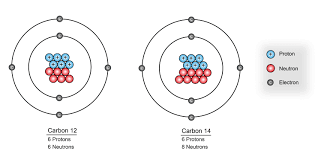Posted on February 27, 2021
This is an update of my post published on February 27, 2010:
On this date in 1813, President James Madison signed into law a Congressional “Act to Encourage Vaccination.”
On an earlier post, I commemorated the introduction of the smallpox vaccine and mentioned that Edward Jenner, whose work led to the eradication of smallpox, is credited by some experts with saving more lives than anyone else in history.
Well, today we celebrate government support of vaccinations and other preventative health care measures that really work. What could be more timely as various governments of the world have been striving to control the pandemic and vaccinate their populations??
The Act to Encourage Vaccination was the first U.S. program in the young nation’s history to improve the health of the general populace. It not only “encouraged” people to get vaccinated against the dreaded disease, it established a safe, uncontaminated supply of vaccine, subsidized distribution of the vaccine, and appointed a National Vaccine Agent.

The Children’s Hospital of Philadelphia website has some resources for kids to learn about vaccines – including an activity book in English and Spanish.
This PBS video – for kids as well as adults – explains how vaccines work.
On this date in 1932, Dr. James Chadwick discovered the neutron. This is the particle in the nucleus (center) of atoms that is similar in size (mass) to the positively-charged proton, but that has no electrical charge. (Chadwick named it neutron because something with no charge is “neutral.” In the diagram below, the neutrons are green.)
His discovery was no accident, no surprise. Chadwick reviewed others’ work and thought there must be a particle as large as a proton but electrically neutral, and he ran experiments specifically designed to detect it. Chadwick won a Nobel Prize for his discovery.
Charge up with Math!
A proton is made up of 2 Up quarks and 1 Down quark.
A neutron is made up of 2 Down quarks and 1 Up quark.
An Up quark has a 2/3 positive charge.
A Down quark has a 1/3 negative charge.
Can you come up with equations that shows how much charge a proton has, and that shows why a neutron has no charge?
Learn more about atoms at the Jefferson Lab website. Older kids might enjoy a more detailed look provided by Particle Adventure.
On this date in 1940, Martin Kamen and Sam Ruben discovered carbon-14 – which had been predicted by Willard F. Libby. A physical chemist, Libby also predicted a way to use carbon-14 – and he was right about that, too!
 |
| Willard F. Libby |
A carbon-14 atom is a rare variation (or isotope) of carbon that has two more neutrons than the usual carbon atom. It basically behaves like normal carbon but is a little bit heavier. It’s also radioactive, and it slowly decays, changing into nitrogen-14.
There is always a tiny amount of carbon-14 in the atmosphere, along with a whole lot of normal carbon, in a gas called carbon dioxide. As long as plants are alive, they take in carbon (a tiny amount of carbon-14 and a whole lot of normal carbon) and use it to make leaves and fruits and seeds and roots. Animals, including people, eat plants or the animals that eat the plants and get carbon in their bodies, too (a tiny amount of carbon-14 along with a whole lot of normal carbon).
This means that, as long as plants and animals are alive, they have in their bodies carbon-14 in about the same proportion to normal carbon as every other creature. But when a plant or animal dies, the proportion changes. Remember, carbon-14 slowly changes into nitrogen-14. A dead animals isn’t breathing or eating, so it doesn’t get any more carbon-14, and the carbon-14 that is already in its body starts to break down, or decay. Measuring the amount of carbon-14 that is still left is key to using carbon-14 to figure out about how long ago organisms died.
And THAT is the use Willard Libby predicted for carbon-14: figuring out about how long ago organisms lived and died. He called this radiocarbon dating.
See the diagram at “How Stuff Works” for a more detailed explanation.
Notice that carbon-14 dating only works to figure out dates of biological things like bones, wood, fabric—things that were once living or that were made from once-living things.
Also, radiocarbon dating only works to figure out ages of items that are 50 thousand years old or younger. That means it’s useful to figure out how old early cave-dwelling human remains are, but it cannot be used to test anything dinosaur-related, since dinos died out about 65 million years ago!
Carbon Dating…Simplified
This lesson plan uses fun things like gummy bears and popcorn to explore concepts such as half-life and the process of carbon dating. It’s written for an entire classroom but could be modified to work with individual students, too. It’s high-level stuff but designed to be accessible to Grades 3 to 6.
Also on this date:
Plan ahead:
-
February holidays
-
February birthdays
-
Historical anniversaries in February
-
March holidays
-
March birthdays
-
Historical anniversaries in March






















